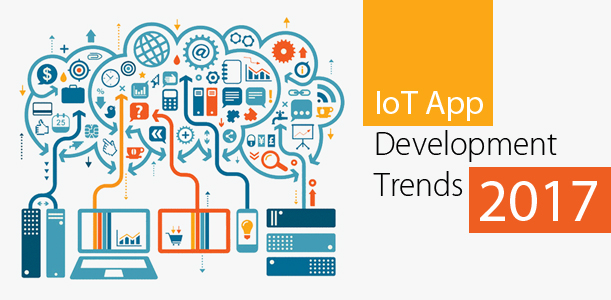Internet of Things (IoT) is no more just a concept. It is being implemented by the industries and being used by the users at ground level also. In fact, it is being considered as the next industrial revolution by many of the industry experts.
And if you would ask why? Well, the answer is quite simple. IoT is the future of how businesses, user/consumers and government will interact with all the physical elements present around them. Many of the industry experts have been keeping a track about the sectors in which IoT is contributing majorly and what would be the future trends.
If the industries would just have the right IoT model, then they can really gain a lot by attracting new customers through improved customer satisfaction and better insight. And these are just a few benefits to mention.
Keeping all this in mind, let’s talk about some of the IoT trends that are going to rule the IT and business world in 2017 and beyond.
1. IoT, Containers and Artificial Intelligence
AI is of real use in situations where IoT needs to be implemented as it can take big data and ultimately convert it to the useful information. It works on the same principle as in other retail fields – the data is reviewed and patterns are detected so that it can be used to make better decisions.
In 2017, the IoT software would be distributed across gateways, cloud services and edge devices. AI and machine learning clouding serviced would also be put in use in order to ensure proper mining of data that would be coming in from all the IoT devices.
2. IoT and Connectivity
Currently different parts of IoT are being connected to the sensors with the help of technologies like Bluetooth, Wi-Fi, Wi-Max, low power Wi-Fi, Long Term Evolution (LTE), regular Ethernet and Li-Fi (employing light as a medium of communication between different parts of network which includes sensors too).
In 2017, new ways of wireless connection such as Sigfox, 3GPP’s narrowband (NB)-IoT and LoRaWAN will be tested. Steps would be taken in the direction of providing the quality connectivity as more wireless options and protocol will be evaluated by the IoT decision makers.
3. IoT and Employee Training
All the organizations which has started investing in the IoT projects face an issue of skilled and knowledgeable workers who are acquainted with the advanced technology like Internet of Things. According to a survey conducted by TEKsystems in the last quarter of 2016, most of the companies face a problem in finding enough number of workers who would secure IoT.
In 2017, major industrial players will be investing a significant amount of their budget in providing IoT certifications and training to enhance the knowledge of techies in this niche. These programs will be introduced as the mainstream training programs in IT industry.
4. IoT and Mobile Moments
IoT has not just been working with a futuristic approach and opening up opportunities for the future markets, but it is also catering the needs of the present market. It does not just collect the data and mine it to extract meaningful information but also consider the questions like how, from where, when and why the data needs to be collected.
In 2017, more such IoT mobile app development and moments in which a person takes out his smartphone to get what he desires will appear on the connected devices. Whether it will be regarding the virtual assistants, smart wearables, vehicles or home appliances, every connected device will now provide an extremely rich stream of data to the product and service owner which could then be used to interact better with the customers.
5. IoT and New Business Models
IoT is actually a big bubble in the market whose implementation results are acting as a huge motivational force for investing in and operating the solid business models. The new business models which reduced the cost of ownership, share the cost of devices with the users and make user experience much more joyful and less of an aggravation must satisfy all the requirements of the e-commerce markets, including consumer, vertical and horizontal.
In 2017, new categories will be introduced in the smart markets. One of the key elements that will be considered and boosted up is bundling of product with the services. For instance, a product like Amazon’s Alexa will be categorized as just a wireless speaker if the services like music streaming and voice recognition would not have been integrated in it.
Summing It Up…
IoT is opening up many opportunities not only in the IT industry but many other businesses, which leads to its prospect of becoming a trillion-dollar industry itself in the years to come. It is, in every sense, the next level of automation that is redefining how humans will communicate with the things present in their environment. And since this technology is still in its infantry stage, there are many obstacles to clear out and years to look forward to before we can achieve that dream of IoT oriented world.
